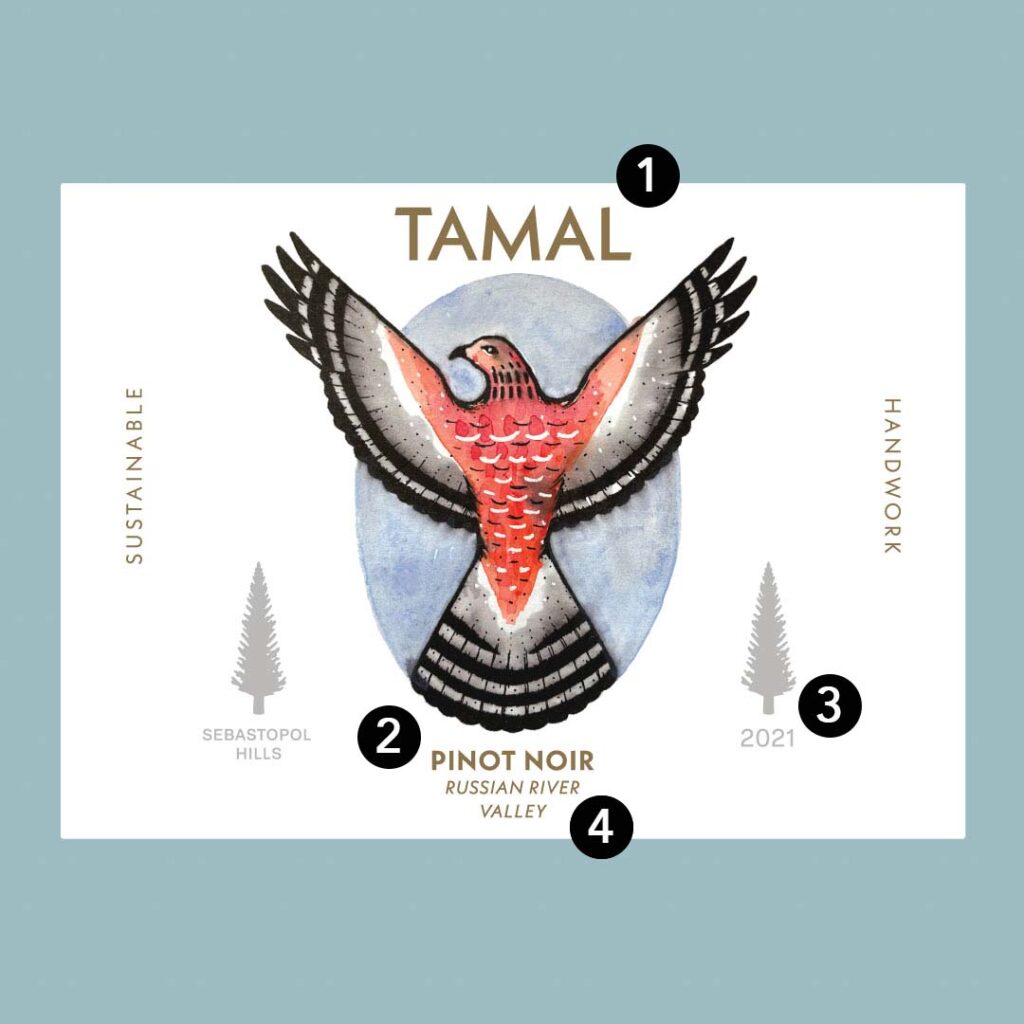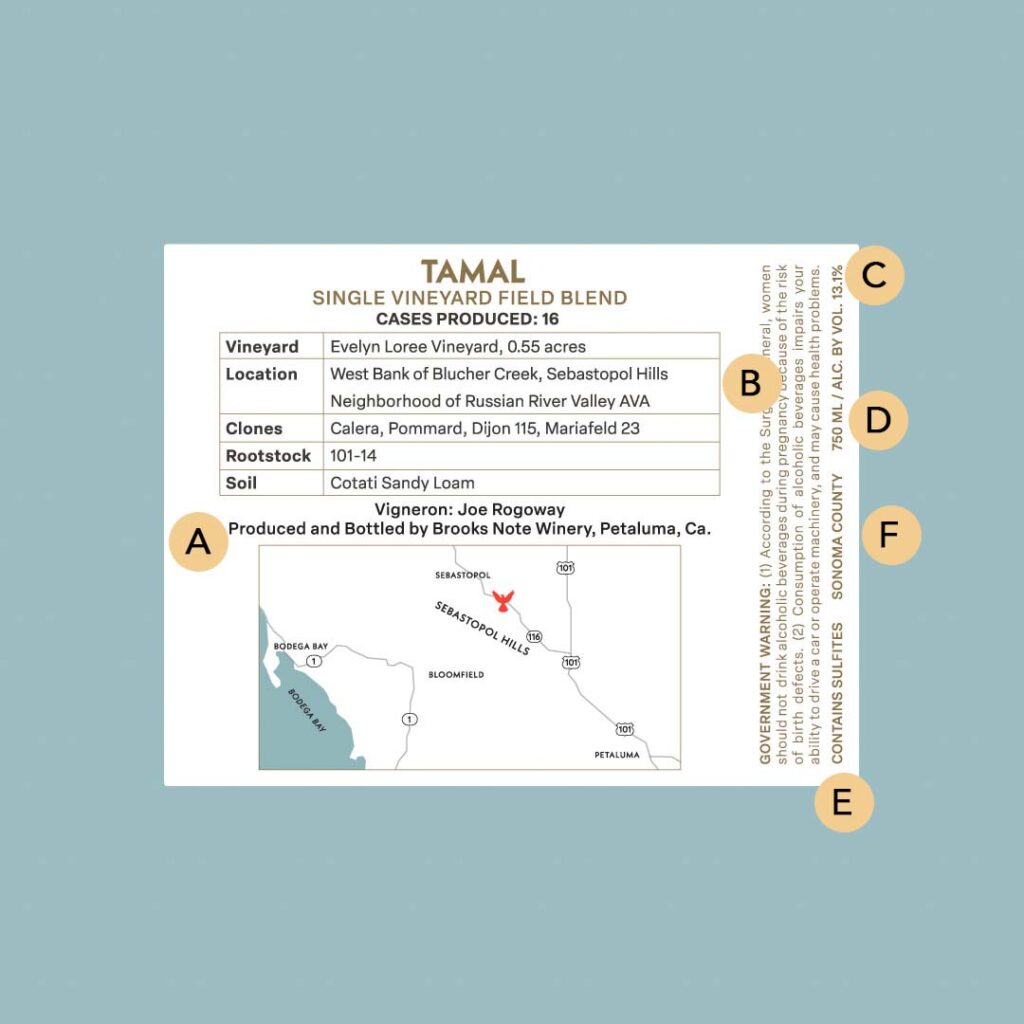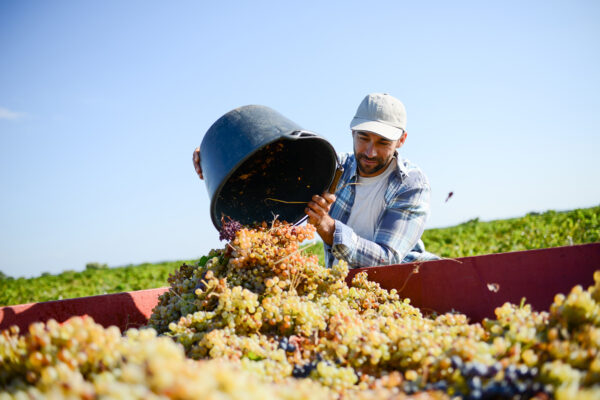Before any bottle of wine (inclusive of cider and mead) can be introduced into commerce in the United States, it must have an affixed label which has received either a Certificate of Label Approval (COLA) or COLA Exemption from the Alcohol and Tobacco Tax and Trade Bureau (TTB). This article focuses on the regulatory requirements which must be met in order to obtain a COLA.
Mandatory Labeling Requirements for Wine Bottles
Brand Label Requirements for Wine Bottles
The “brand label” is the label carrying the usual distinctive design, the brand name of the wine (see 27 CFR 4.10). Generally, TTB’s brand labeling regulations are contained in 27 CFR 4.10 and 4.32 (unless otherwise noted) and these provisions mandate that certain information appear on the brand label, while other mandatory information, and optional information, can appear on any label.
TTB regulations state that the following information information must appear on the brand label:
- Brand name in accordance with 27 CFR 4.33
- Class or type designation in accordance with 27 CFR 4.34; and
- Appellation of origin (if required as per 27 CFR 4.23 and 4.27)
Listing an Appellation of Origin on the Wine Label
An Appellation of Origin generally designates the geographic area in which the grapes are grown. An American viticultural area (AVA) is a type of appellation specific to wine grapes and is a defined grape-growing region having a name, distinguishing features, and a delineated boundary (see 27 CFR part 9).
If certain information about a wine is included on the label, such as the vintage date, the varietal designation, an “estate bottled” claim, etc., an appellation of origin is required.
In the example shown above, TTB regulations require the Appellation of Origin be listed on the brand label (TAMAL) because there is both a vintage date (2021) and a varietal (class or type) designation (Pinot Noir) listed on the brand label. The Appellation of Origin listed on the brand label is “Russian River Valley” which is an American Viticultural Area (AVA) located in Sonoma County, California.
Below is an example of a wine label highlighting the mandatory information described above. The non-listed elements on the brand label are allowed but optional.

Other Mandatory Wine Bottle Label Information
Other mandatory information, such as the net contents, the alcohol content, the sulfite declaration, and the health warning statement, can appear on any label.
In the example shown below, the back label contains both other mandatory information as well as optional information. Specifically the alcohol content (13.1%), the sulfite declaration, net contents, and the health warning statement are all listed on the back label.

Appearance of Mandatory Wine Label Information
TTB regulations control other aspects of the appearance of mandatory information on wine labels. For example, for bottles in excess of 187ml, the appellation of origin must “be at least 2mm in size and substantially as conspicuous as the class/type designation”. It must be “readily legible under ordinary conditions; appear on a contrasting background; and must appear separate and apart from, or be substantially more conspicuous than, descriptive or explanatory information”.
Optional Information on Wine Bottle Labels
Other information such as the vineyard, location, soil type, and rootstack are not items that are required by TTB’s regulations, but are allowed.
The above is not a comprehensive list of all regulatory requirements which must be considered when designing a wine label and submitting an application for COLA approval. For comprehensive guidance on this important process, please contact us and schedule a time to speak with one of our attorneys.


